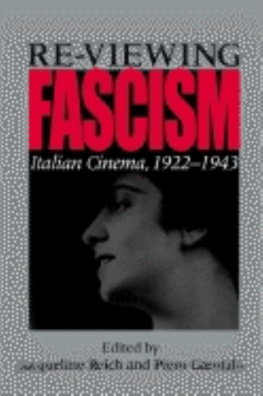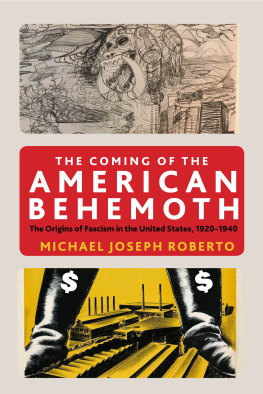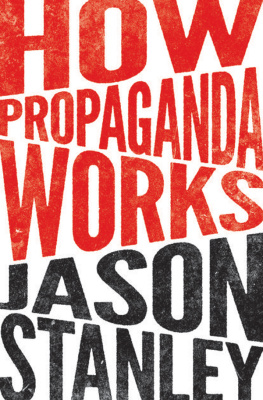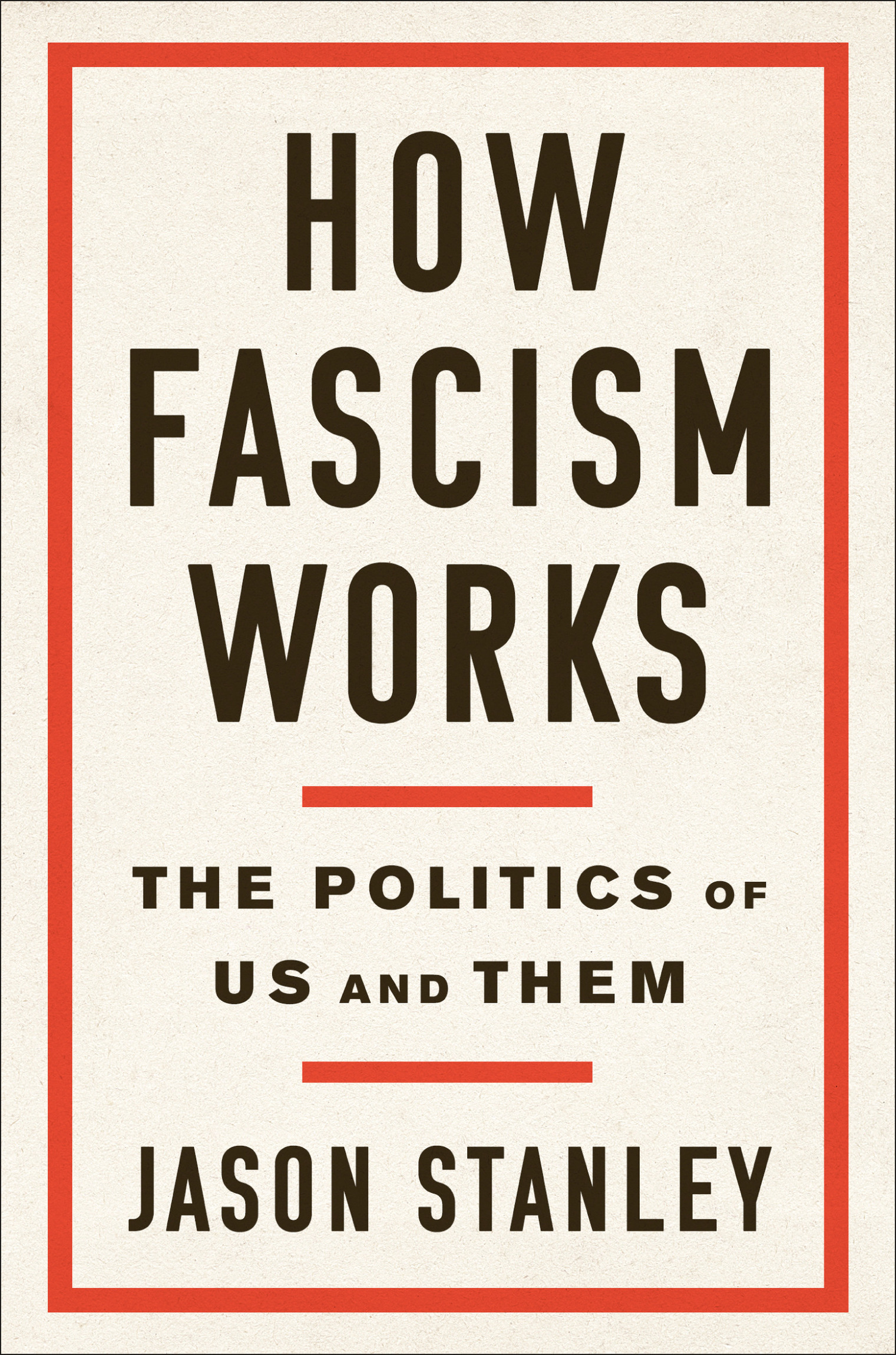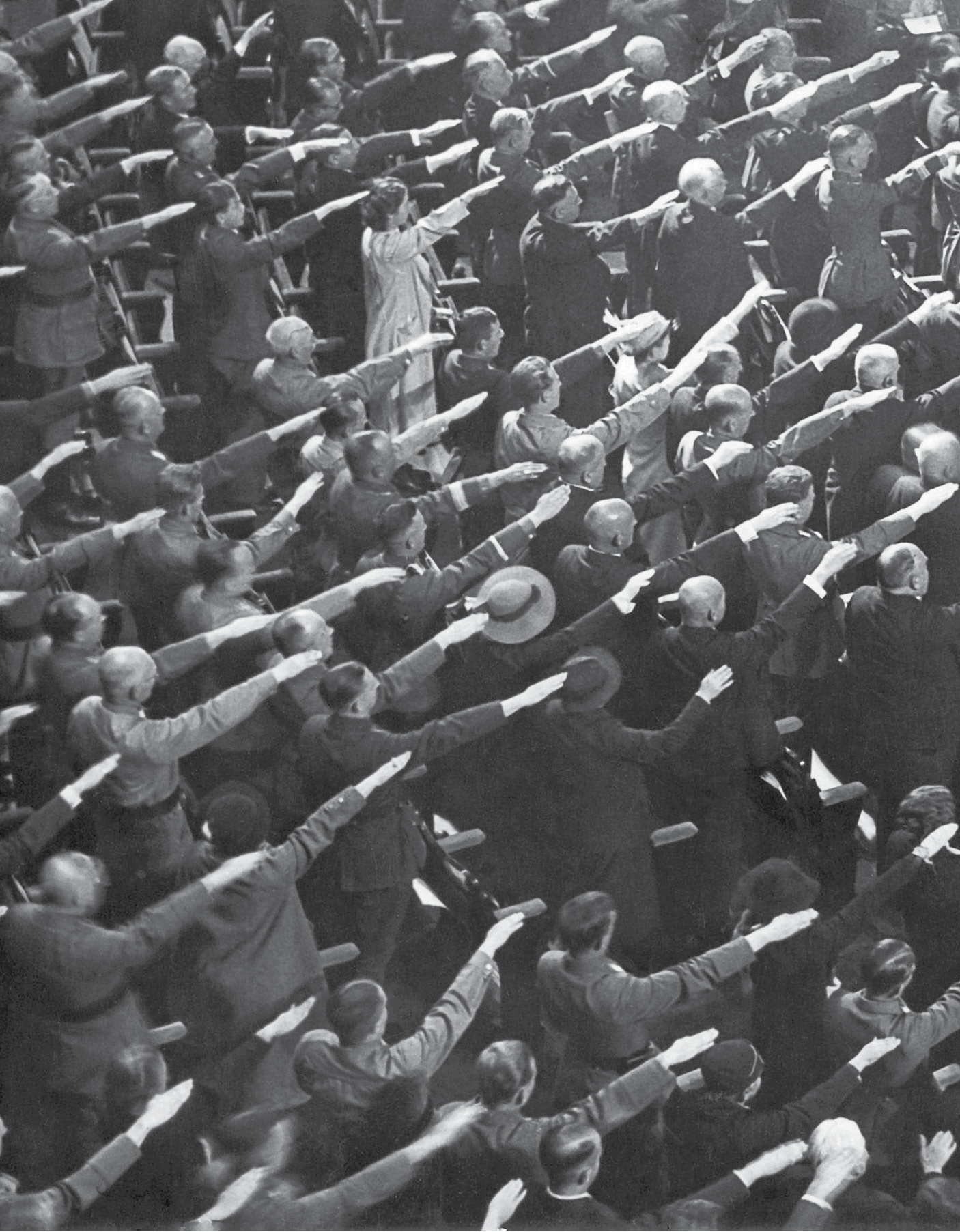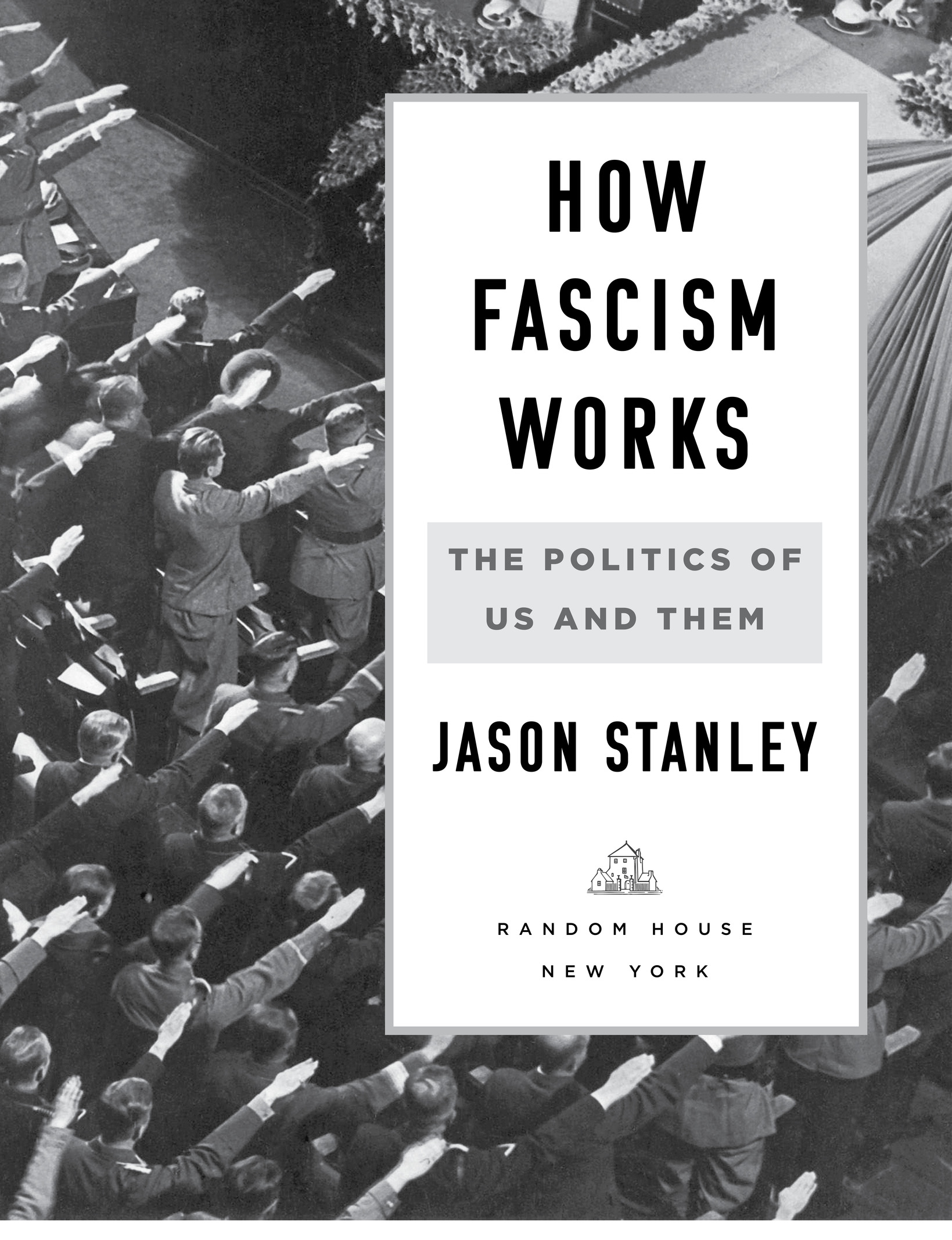All rights reserved.
Published in the United States by Random House, an imprint and division of Penguin Random House LLC, New York.
R ANDOM H OUSE and the H OUSE colophon are registered trademarks of Penguin Random House LLC.
Names: Stanley, Jason, author.
Title: How fascism works : the politics of us and them / Jason Stanley.
Description: First edition. | New York : Random House, [2018] |
Includes bibliographical references and index.
Subjects: LCSH: Fascism. | Polarization (Social sciences)Political aspects.
INTRODUCTION
Growing up with parents whod fled Europe as refugees, I was raised with stories of the heroic nation that helped defeat Hitlers armies and usher in an unprecedented era of liberal democracy in the West. Near the end of his life, gravely ill with Parkinsons disease, my father insisted on visiting the beaches of Normandy. Leaning on the shoulder of his wife, my stepmother, he fulfilled a lifelong dream, walking where so many brave American youth lost their lives in the battle against fascism. But even as my family celebrated and honored this American legacy, my parents also knew that American heroism and American ideas of freedom have never been just one thing.
Before World War II, Charles Lindbergh typified American heroism with his daring flights, including the first solo transatlantic flight, and his celebration of new technology. He parlayed his fame and heroic stature into a leading role in the America First movement, which opposed Americas entrance into the war against Nazi Germany. In 1939, in an essay entitled Aviation, Geography, and Race, published in that most American of journals, Readers Digest, Lindbergh embraced something close to Nazism for America:
It is time to turn from our quarrels and to build our White ramparts again. This alliance with foreign races means nothing but death to us. It is our turn to guard our heritage from Mongol and Persian and Moor, before we become engulfed in a limitless foreign sea.
The year 1939 was also when my father, Manfred, then six years old, escaped Nazi Germany, leaving Tempelhof Airport in Berlin in July with his mother, Ilse, after spending months in hiding. He arrived in New York City on August 3, 1939, his ship sailing past the Statue of Liberty on its way to dock. We have a family album from the 1920s and 30s. The last page has six different pictures of the Statue of Liberty gradually coming into view.
The America First movement was the public face of pro-fascist sentiment in the United States at that time. In the twenties and thirties, many Americans shared Lindberghs views against immigration, especially by non-Europeans. The Immigration Act of 1924 strictly limited immigration into the country, and it was specifically intended to restrict the immigration of both nonwhites and Jews. In 1939, the United States allowed so few refugees through its borders that it is a miracle that my father happened to be among them.
In 2016, Donald Trump revived America First as one of his slogans, and from his first week in office, his administration has ceaselessly pursued travel bans on immigration, including refugees, specifically singling out Arab countries. Trump also promised to deport the millions of nonwhite Central and South American undocumented workers in the United States and to end legislation protecting the children they brought with them from deportation. In September 2017, the Trump administration set a cap of forty-five thousand on the number of refugees that will be allowed into the United States in 2018, the lowest number since presidents began placing such limits.
If Trump recalled Lindbergh specifically with America First, the rest of his campaign also longed for some vague point in historyto Make America Great Again. But when, exactly, was America great, in the eyes of the Trump campaign? During the nineteenth century, when the United States enslaved its black population? During Jim Crow, when black Americans in the South were prevented from voting? A hint about the decade that was most salient to the Trump campaign emerges from a November 18, 2016, Hollywood Reporter interview with Steve Bannon, the then president-elects chief strategist, in which he remarks about the era to come that it will be as exciting as the 1930s. In short, the era when the United States had its most sympathy for fascism.
...
In recent years, multiple countries across the world have been overtaken by a certain kind of far-right nationalism; the list includes Russia, Hungary, Poland, India, Turkey, and the United States. The task of generalizing about such phenomena is always vexing, as the context of each country is always unique. But such generalization is necessary in the current moment. I have chosen the label fascism for ultranationalism of some variety (ethnic, religious, cultural), with the nation represented in the person of an authoritarian leader who speaks on its behalf. As Donald Trump declared in his Republican National Convention speech in July 2016, I am your voice.
My interest in this book is in fascist politics. Specifically, my interest is in fascist tactics as a mechanism to achieve power. Once those who employ such tactics come to power, the regimes they enact are in large part determined by particular historical conditions. What occurred in Germany was different from what occurred in Italy. Fascist politics does not necessarily lead to an explicitly fascist state, but it is dangerous nonetheless.
Fascist politics includes many distinct strategies: the mythic past, propaganda, anti-intellectualism, unreality, hierarchy, victimhood, law and order, sexual anxiety, appeals to the heartland, and a dismantling of public welfare and unity. Though a defense of certain elements is legitimate and sometimes warranted, there are times in history when they come together in one party or political movement. These are dangerous moments. In the United States today, Republican politicians employ these strategies with more and more frequency. Their increasing tendency to engage in this politics should give honest conservatives pause.
The dangers of fascist politics come from the particular way in which it dehumanizes segments of the population. By excluding these groups, it limits the capacity for empathy among other citizens, leading to the justification of inhumane treatment, from repression of freedom, mass imprisonment, and expulsion to, in extreme cases, mass extermination.
Genocides and campaigns of ethnic cleansing are regularly preceded by the kinds of political tactics described in this book. In the cases of Nazi Germany, Rwanda, and contemporary Myanmar, the victims of ethnic cleansing were subjected to vicious rhetorical attacks by leaders and in the press for months or years before the regime turned genocidal. With these precedents, it should concern all Americans that as a candidate and as president, Donald Trump has publicly and explicitly insulted immigrant groups.


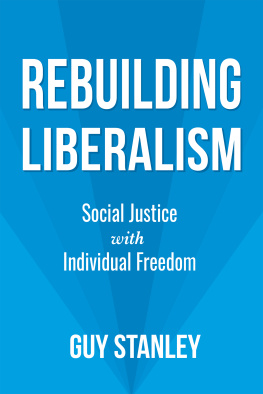


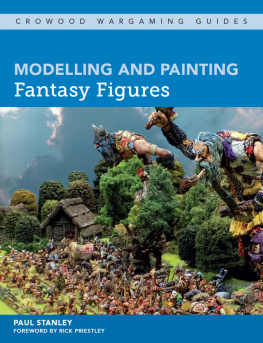
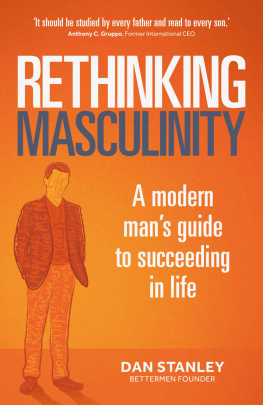

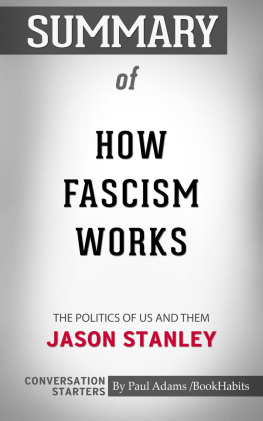

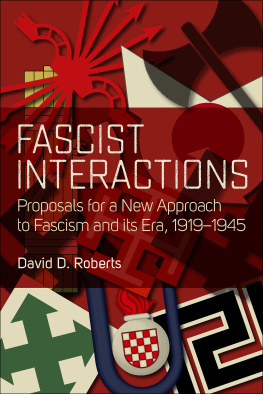
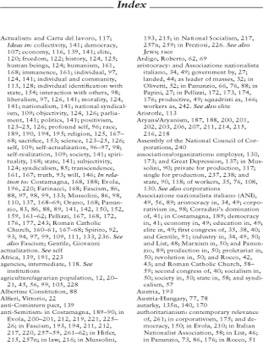
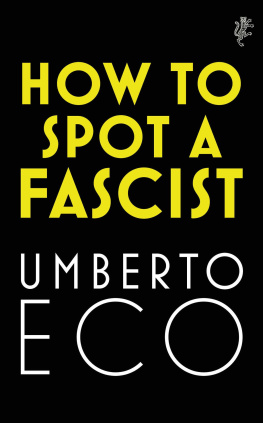

![Patrick G. Zander - Fascism through History [2 volumes]: Culture, Ideology, and Daily Life](/uploads/posts/book/262756/thumbs/patrick-g-zander-fascism-through-history-2.jpg)
